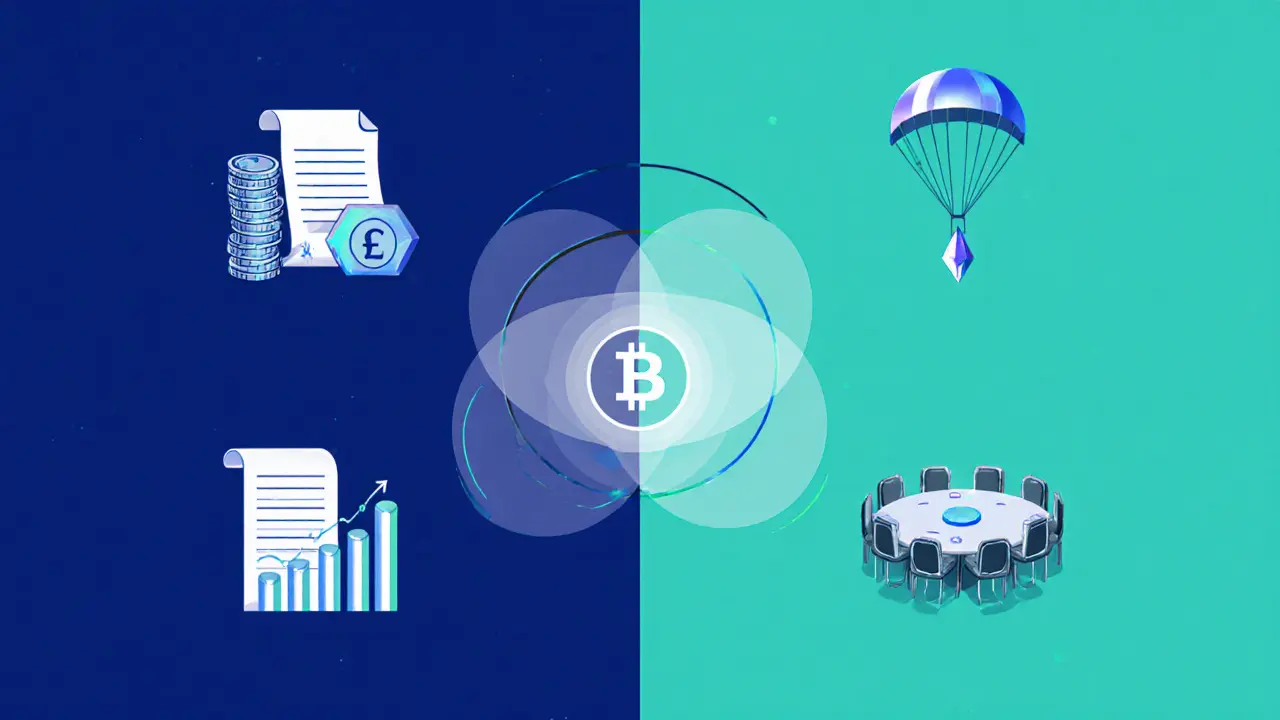SAFT: Simple Agreement for Future Tokens Explained
When navigating SAFT, a Simple Agreement for Future Tokens that lets investors fund a project now in exchange for tokens once they’re issued. Also known as Token Sale Agreement, it bridges crypto fundraising and securities law. In plain terms, a SAFT is a contract that promises future delivery of a token, subject to regulatory clearance. SAFT encompasses a blend of venture‑style financing and securities compliance, meaning every token sale must ask: does this agreement trigger securities rules? That question creates a semantic triple: SAFT requires securities regulation, and securities regulation influences token sale structures. Because a SAFT is not a token itself, it avoids the immediate classification of a security, but once the token launches, regulators often treat the token as the security the SAFT promised.
How SAFT Connects to Core Crypto Concepts
Understanding a SAFT means looking at three tightly linked entities. First, Securities Regulation, the legal framework that determines when a digital asset is considered a security and dictates filing, disclosure, and licensing requirements sets the rulebook. Second, a Token Sale, the process of offering future tokens to investors, often via a SAFT, before the network is live is the practical event. Third, Compliance, the series of steps—legal review, filing with regulators, and ongoing reporting—that ensure a SAFT‑based offering stays within the law is the operational glue. These entities form a chain: a token sale uses a SAFT, the SAFT triggers securities regulation, and compliance bridges the two. The relationship is why many projects also explore a regulatory sandbox—a controlled environment that lets startups test SAFT structures under a regulator’s supervision before full launch. That sandbox link creates another triple: regulatory sandbox enables SAFT experimentation, which reduces compliance risk.
For anyone building a new crypto project, the SAFT framework offers a clear roadmap. Start by drafting the agreement, then run a compliance check against the relevant securities regulations in your jurisdiction—whether it’s the U.S. MSB and BitLicense regime, the EU’s MiCA passport, or Thailand’s exchange licensing rules. If you’re unsure, consult the “Crypto Licensing Requirements” guides that break down state‑by‑state permits, or look at sandbox programs that outline step‑by‑step applications. Next, map out your token’s economics so the future token matches what investors were promised, mitigating the risk of a “token‑as‑security” classification. Finally, keep an eye on related topics like airdrop compliance or exchange listings; a poorly timed airdrop can attract regulator scrutiny to a SAFT‑funded project. Below you’ll find a curated set of articles that dive deeper into each piece of this puzzle—from licensing checklists and sandbox participation tips to real‑world token sale examples and compliance best practices—giving you the tools to launch a SAFT‑driven offering with confidence.

Utility Token Distribution Models: A Practical Guide for Tokenomics Design
Nov 13, 2024, Posted by Ronan Caverly
Explore paid and free utility token distribution models, their legal implications, design considerations, and practical steps to build a fair, compliant tokenomics strategy.
MORESEARCH HERE
Categories
TAGS
- decentralized exchange
- crypto exchange review
- cryptocurrency
- crypto coin
- CoinMarketCap airdrop
- smart contracts
- tokenomics
- cryptocurrency exchange safety
- crypto exchange
- cryptocurrency airdrop
- crypto airdrop
- cryptocurrency exchange
- crypto airdrop guide
- blockchain token distribution
- DeFi
- crypto exchange scam
- crypto airdrop 2025
- Ethereum
- cross-chain interoperability
- ERC-20
